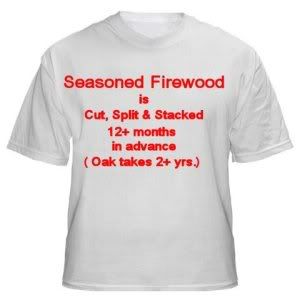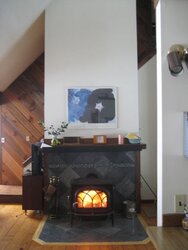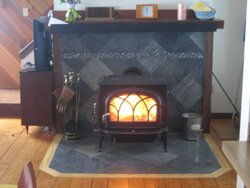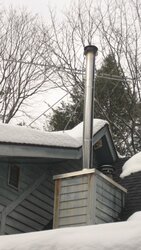We have a new Oslo and have been experimenting with burning technique for about a month. Our wood seems to be dry hardwood (no pop and sizzle or seepage at the ends of the split). Draft is good. No problems getting it started or having coals in the morning. Measuring the stove top temperature in the corner. We don't have access to the stove pipe.
However, we don't seem to be getting secondary burn or maintaining steady temps. Starting from a cold stove, I'll fill the stove loosely maybe half full and starting with the loading door ajar and full primary air run it up to say 400 degrees. Then I'll load it full and keeping the primary full open go to 500 or 550. This could take from 1 to 2+ hrs, seemingly dependent on how much ash is in the stove. Now I'll ease the primary back in increments but right away I start to lose temperature. Within a half hour it could be down to 450 and I don't see the expected "light show".
In order to keep the temp in the 400+ range I have to run the primary air vent at 50% or more. We're burning through wood at a great rate. A full stove can be down to charcoal in 3 hrs and have just briefly peaked at 500 and struggled to stay above 400 during that time.
Why no secondary burn, or am I missing it? I realize I probably can't damp the primary all the way shut, but shouldn't I be able to maintain the temp for a couple hours or more at say 75% closed?
Thanks for your suggestions.
However, we don't seem to be getting secondary burn or maintaining steady temps. Starting from a cold stove, I'll fill the stove loosely maybe half full and starting with the loading door ajar and full primary air run it up to say 400 degrees. Then I'll load it full and keeping the primary full open go to 500 or 550. This could take from 1 to 2+ hrs, seemingly dependent on how much ash is in the stove. Now I'll ease the primary back in increments but right away I start to lose temperature. Within a half hour it could be down to 450 and I don't see the expected "light show".
In order to keep the temp in the 400+ range I have to run the primary air vent at 50% or more. We're burning through wood at a great rate. A full stove can be down to charcoal in 3 hrs and have just briefly peaked at 500 and struggled to stay above 400 during that time.
Why no secondary burn, or am I missing it? I realize I probably can't damp the primary all the way shut, but shouldn't I be able to maintain the temp for a couple hours or more at say 75% closed?
Thanks for your suggestions.






